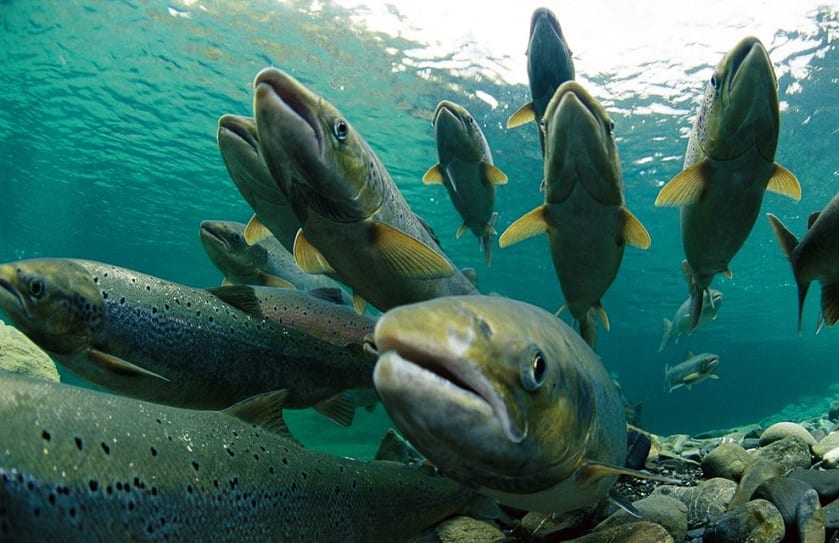
Salmons are quite famous fish for doing multiple feats during their attractive and unique life cycle. Almost everyone has ever heard of the famous journey of the salmon to be able to reproduce. This is what makes this fish special and unique, since it is an example of the resistance and determination that animals can have due to their reproductive and survival instincts.
Do you want to know more details about the salmon life cycle and your curiosities?
The history of salmon
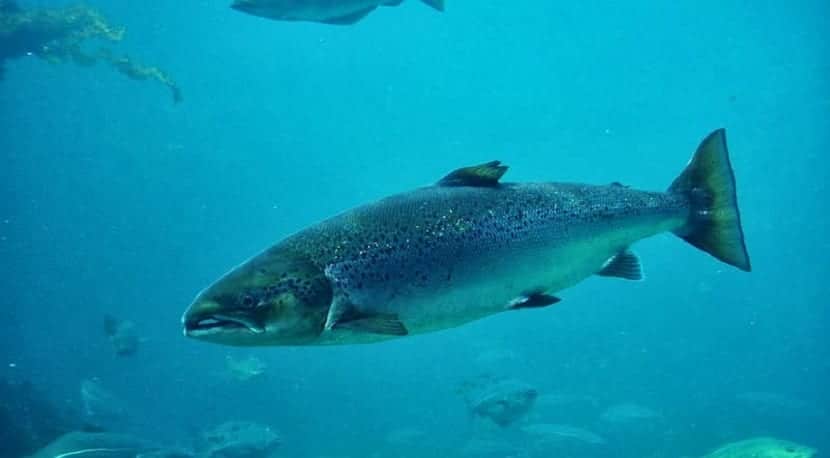
Salmons belong to the genus Oncorhynchus and to the salmonid family. They are anadromous fish, which means that develop in the marine environment and then live in fresh waters. They are capable of living in both types of salt concentrations. Its area of distribution is in the north of the Pacific Ocean with some species near the Gulf of Mexico.
The date on which the first salmon appeared on our planet is not yet well known, but it is more or less known that they belong to the group of teleost fish and that these dominated the oceans during the Cretaceous. This dates back to the time when dinosaurs lived about 135 million years ago. Since then, salmon have had a rather special life cycle compared to other fish. During a long journey of 60 million years, all teleosts have spread throughout the entire planet and have undergone very different evolutionary processes from each other.
During this evolutionary process, salmon have preferred to live in the cold and oxygenated waters of the northern hemisphere. Scientists have tried to understand the reasons that lead salmon to make their way back to spawn, however, they have not yet been able to draw conclusions about it.
The life cycle of salmon
Nacimiento
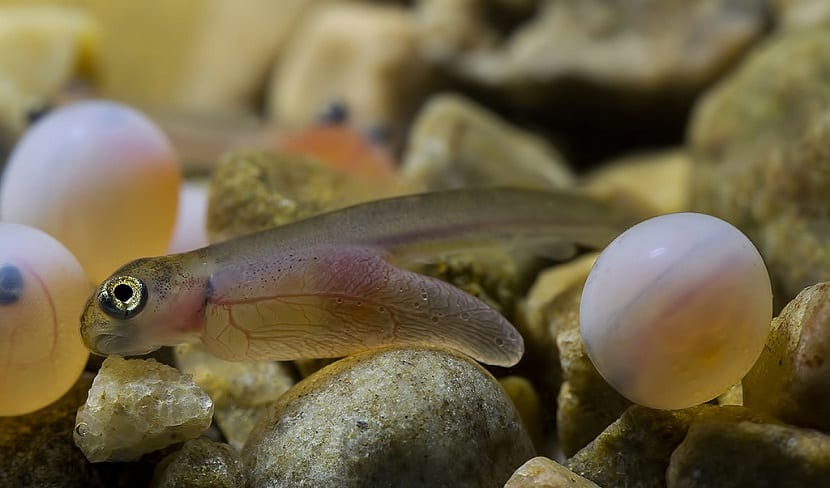
Source: David Alvarez http://www.naturalezacantabrica.es/2012/01/
Salmon hatch from their eggs in freshwater rivers. Normally, it is in autumn when the female and the male place the eggs in the rivers to fertilize them in a nest built with gravel. After a few months of incubation, the eggs hatch and the fry salmon hatch. They stay for a few weeks in the gravel where they acquire some swimming skills. When spring arrives and temperatures rise, it contributes to a change in environmental conditions that favors the learning of the fingerlings, which are leaving the gravel and beginning their independent life.
There are many experts who study the life cycle of salmon and, above all, this phase of their life, since an attempt is made to explain how salmon know that they have to return to their mother river to spawn.
Life
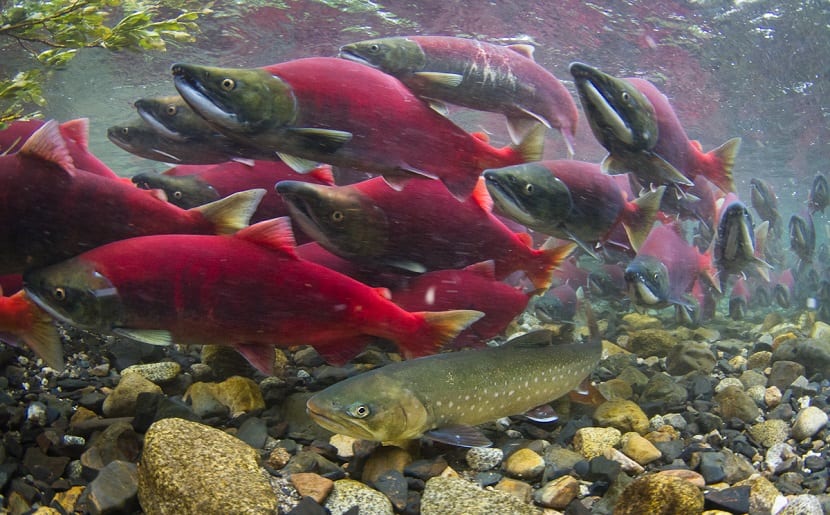
When the fry are larger and more independent, they swim along the river until they empty into the sea. Once there they swim and roam the seas for variable periods depending on each salmon. During this period they find food and a habitat. Once time has passed and as adults, the salmon try to return to the place of their birth to spawn and reproduce. Of course, this path is obviously quite a tessitura. Imagine that they have to swim back against the current by the river from which they were born. Obviously not all salmon survive to tell the tale. The road to his mother river is full of difficulties and dangers.
Return to the mother river

When they reach the mouth of the mother river they begin to climb in groups if the waters are not very turbulent and in the case of a very large river some species do it in a row. During the journey up the river they have to dodge the water eddies, the largest rocks, bears and other predators, the trees in the middle of the river, the contamination from containers and plastics, and all this against the current. All these obstacles they cause a bad state in the body of the salmon that make their appearance deteriorate compared to when they lived in the seas.
Reproduction
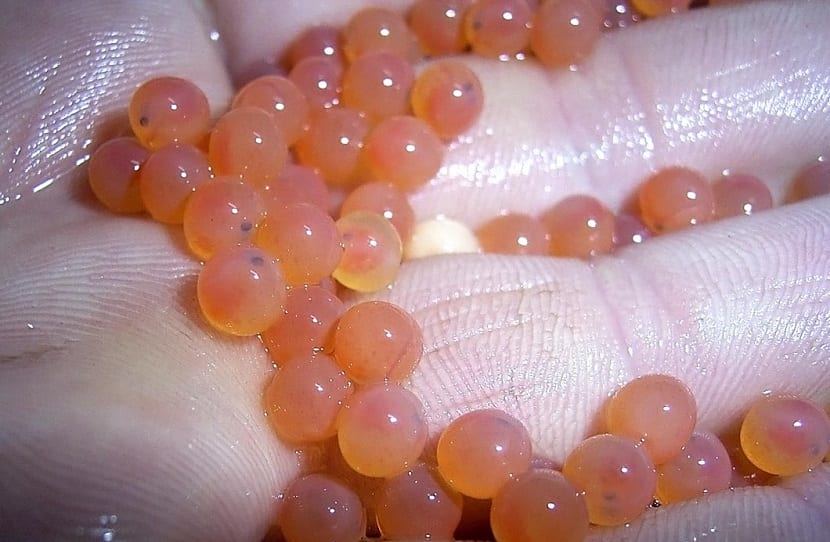
Once they manage to go up the entire river, they reach the spawning area where they were born. It is the same area where they gave birth and all of their ancestors. In this area they continue to live until they are sexually mature and spawn. Once they are sexually ready to reproduce, the female swims near the bottom of rivers to build the gravel nest where they will place the eggs. While the female builds the nest, the male drives away other males who are attracted to the female.
The female uses her tail to wave it and build a nest of between 40 and 50 centimeters. Sometimes, as the other males try to enter the nest the female is building, the female acts violently to drive out intruders. This construction of the nest takes a few hours, since The female chooses and joins the stones that seem most suitable to form the "cradle" where the new salmon will be born. In addition, they can build up to five nests while checking their quality and depth.
Once they have built the nests, the female allows the male to stand next to her so that, at the same time, the female releases the eggs and the male the sperm. In this way fertilization occurs. When the water clears from the seminal fluid, the female watches the eggs at the bottom of the nest and rushes to cover them while wagging her tail like a fan. This movement is done without touching any stone and it is done to create a current that moves the eggs into the gravel to avoid damage and that they are well protected.
As the action ends in one nest, it builds the next one. In each one it is depositing between 500 and 1000 eggs. During the following days he covers them to protect them until he dies.
It is very important that this last phase goes well for the new fry to grow. That is why pollution and human alteration in rivers are factors that make it very difficult for salmon to reproduce. As mentioned before, scientists are looking for reasons why salmon only spawn in their mother river and not elsewhere. Till the date no evidence has been found why. They are only thought to have receptors in the nervous system that use the environmental conditions in which they lived as "souvenirs" to return there to give birth to the next generations.
God continue to bless you, excellent publication, very scientific and illustrative GRACE.
It generated a lot of emotions in me. Thanks
Very well explained the life of salmon. Thanks.
The life cycle of these fish is incredible, it is something wonderful, it calls my attention a lot as they remember well where they came from and have to return the same thing happens with human beings we come from above and we return when we die but the key is how we return clean or dirty